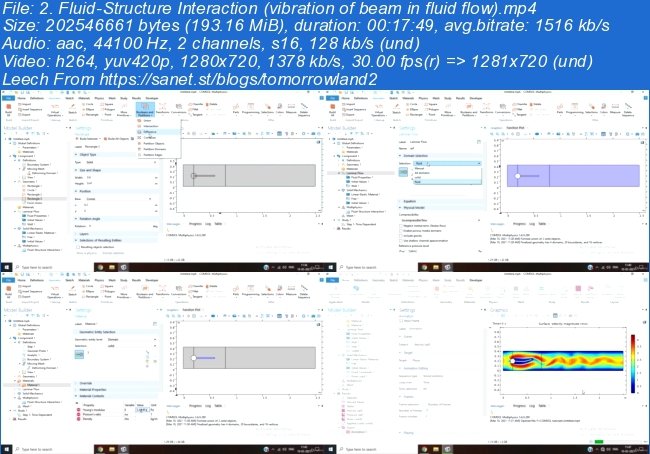
- Comsol multiphysics programming reference manual how to#
- Comsol multiphysics programming reference manual manuals#
- Comsol multiphysics programming reference manual install#
- Comsol multiphysics programming reference manual series#
Lei Chen, general manager of COMSOL Co., Ltd., shares some further insight into the benefits of making such resources readily available. The Chinese version of the Introduction to Application Builder manual. Users also have access to translated COMSOL Server™ product and Application Builder introduction manuals, as well as a postprocessing and visualization handbook.
Comsol multiphysics programming reference manual manuals#
This list includes the COMSOL Multiphysics Installation Guide and the Introduction to COMSOL Multiphysics manual referenced above, as well as introduction manuals for each of the add-on products. In total, there are 39 translated manuals that are provided to users upon selecting the Simplified Chinese option. In addition, the same set of translated manuals can be downloaded from the Resource Gallery. Doing so will give you access to a set of installation and introduction manuals that are translated into Chinese. You now have the ability to select this option when installing the latest version of COMSOL Multiphysics. The new feature that we are referring to is the Simplified Chinese language option. Introducing the New Simplified Chinese Option Here, we’ll take a look at a new feature that is extending the reach of these resources by generating versions that are translated in Chinese. Each of the manuals is designed to explain applicable modeling procedures and physics interfaces as well as highlight some relevant examples from the Application Library. Good news: Introduction manuals are available for these products as well, allowing you to get a jump start on your modeling processes.
Comsol multiphysics programming reference manual how to#
In an alternate scenario, let’s say you have decided to learn how to use a particular add-on product, such as the AC/DC Module or a LiveLink™ interfacing tool. The Introduction to COMSOL Multiphysics manual. These more basic points are complemented by discussions on advanced topics, which range from working with parameters and variables to adding meshes and physics to a model. Here, you will be introduced to the look and feel of the COMSOL Desktop® environment, including examples of how to utilize the user interface as well as the Model Builder and Application Builder. Once you’ve completed the installation process, you can turn your attention to the guide Introduction to COMSOL Multiphysics.
Comsol multiphysics programming reference manual install#
With the COMSOL Multiphysics Installation Guide, you can follow along step-by-step as we show you how to install the software based on your specific operating system, while also exploring the various license types and management tools. Say you are a first-time software user, for instance.
Comsol multiphysics programming reference manual series#
One of the ways that we fulfill this purpose is by offering a series of installation and introduction manuals to our users. Our goal is to give users resources that enable them to better understand the range of features and functionality within the software, thus allowing them to maximize the benefits of its use.

Starting with version 5.2, the Simplified Chinese installation option now offers access to a number of these manuals in versions that are translated into Chinese.ĬOMSOL Multiphysics User Manuals Provide Helpful InstructionsĬOMSOL Multiphysics is a simulation platform that is designed with versatility and flexibility in mind. The installation and introduction manuals provide useful details, covering the basics of the modeling environment as well as some more advanced topics. If you import a mesh containing second-order element node information and increase the element order in the Discretization settings to cubic or higher, the higher-order nodes are inserted on the boundary based on interpolation using the second-order element data.When you are new to the COMSOL Multiphysics® simulation software, it is important to have access to resources that can help you get started with the software quickly. If you import a mesh containing second-order element node information and then lower the order in the Discretization setting to linear, then the curvature of the boundary is no longer respected. This means, for example, that a triangular element on a curved boundary cannot in general have its element nodes all lying in the same plane. However, second-order information on the boundary will not be adjusted to the curvature of the boundary unless the original imported data contains second-order element node information that represent such curvature. The second-order element node information is primarily used for representing curved boundaries. You change the element order used in the Settings window of a physics interface (for example, Heat Transfer in Solids, Solid Mechanics, or Laminar Flow) in the Discretization section. After importing mesh data on the COMSOL Multiphysics native format or NASTRAN format, you can change the element order for the shape functions used for the COMSOL Multiphysics simulation regardless of whether the imported data contained first- or second-order element node information.


 0 kommentar(er)
0 kommentar(er)
